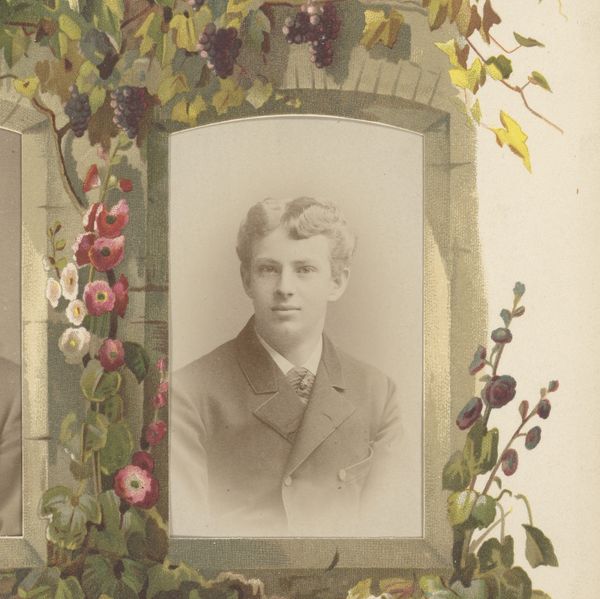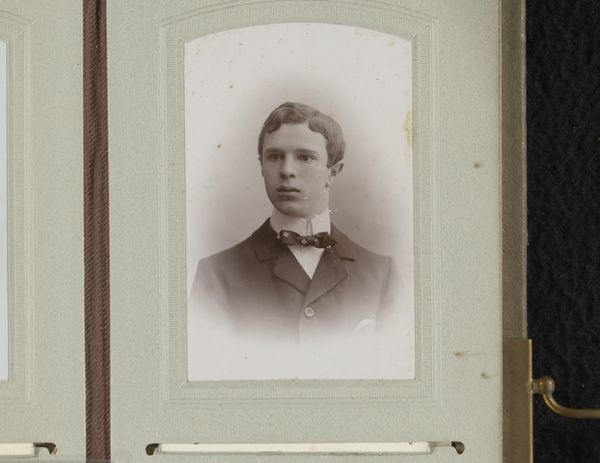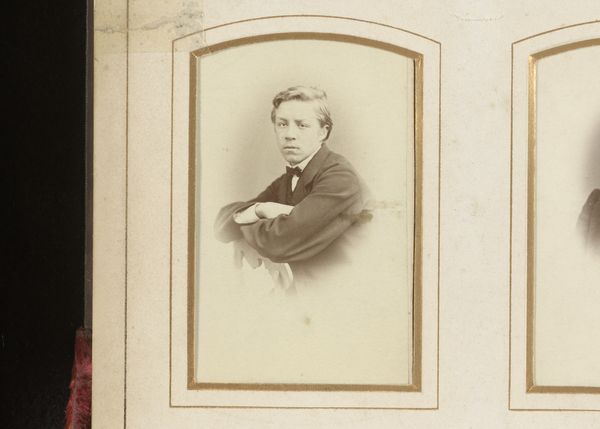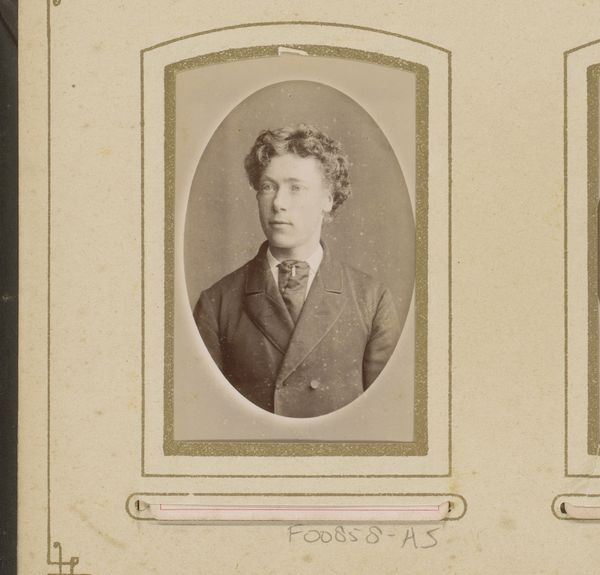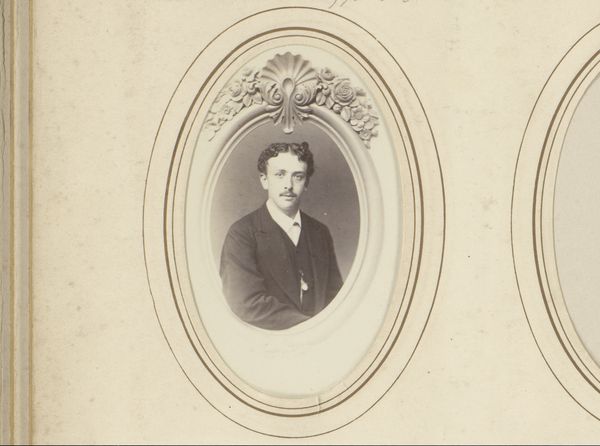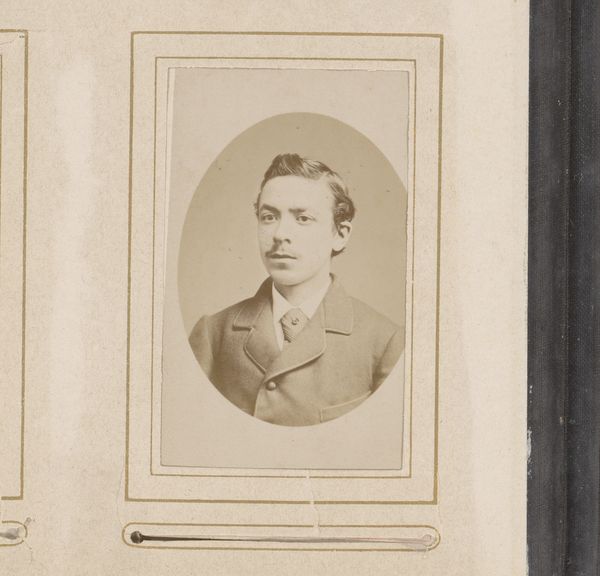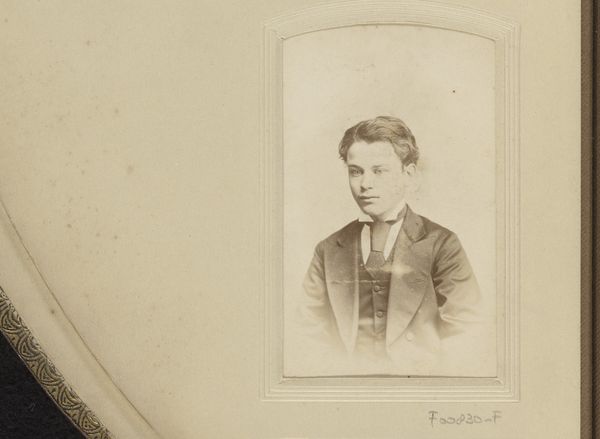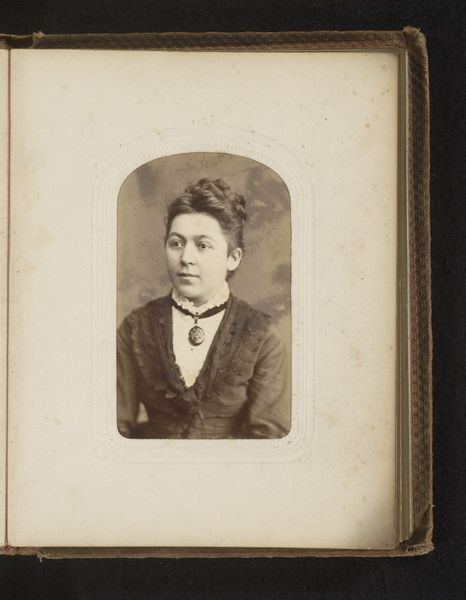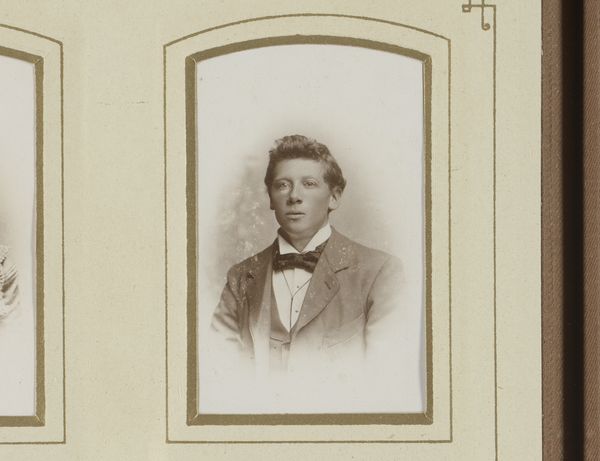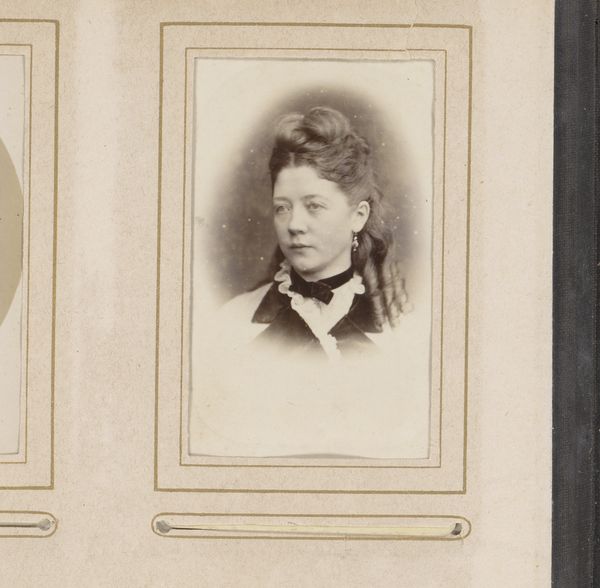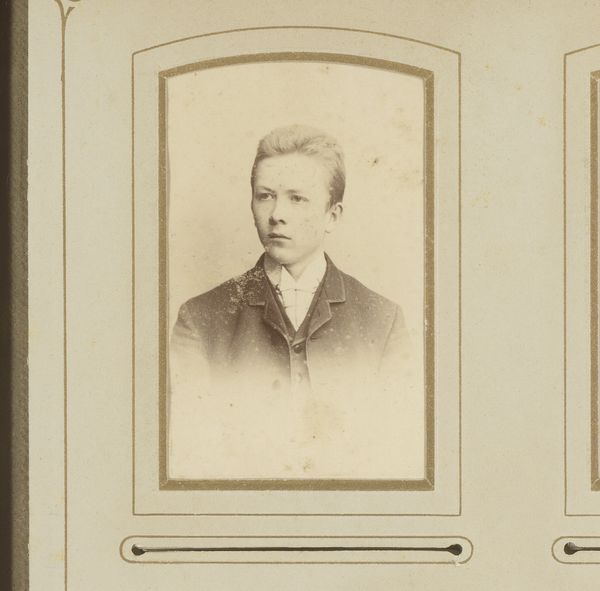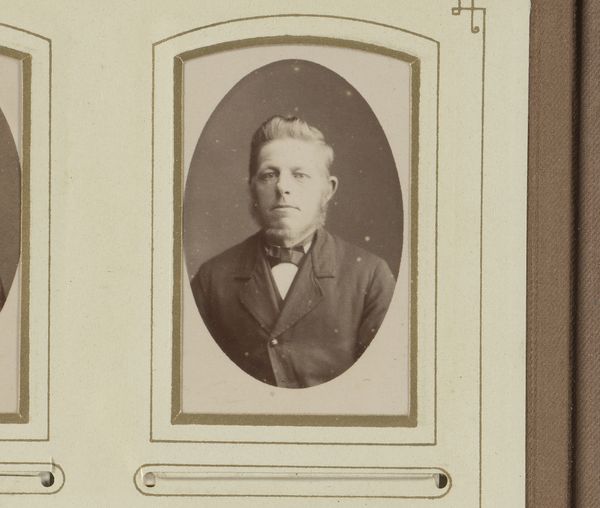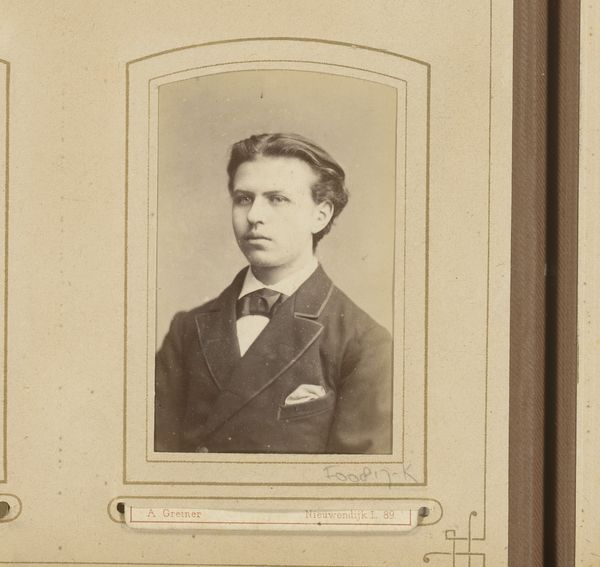
photography, gelatin-silver-print
#
portrait
#
photography
#
gelatin-silver-print
#
watercolour illustration
#
realism
Dimensions: height 85 mm, width 51 mm
Copyright: Rijks Museum: Open Domain
Curator: Here we have an example of photographic portraiture by Julius Jr. Ortgies, “Portret van een jonge man,” dating sometime between 1850 and 1900. Ortgies worked in gelatin-silver print. Editor: He has this lovely earnest expression! Also, is it just me, or does the border remind you a bit of a Victorian greeting card? The stylized grapes and tiny birds are quaint but the fellow at the center is looking off toward serious pursuits, far beyond vines and grapes! Curator: Framing devices, even those that now seem kitsch, can tell us a great deal. The symbolism may hint at the sitter’s profession or social status. Grapes can symbolize wealth, fertility, abundance. How does this symbolism contrast or align with your perception of the young man? Editor: Hmmm, abundance perhaps in potential? He does strike me as intelligent and well-groomed. I'm imagining a future professor or writer. It would be great to know his personal story. His gaze gives him away as someone deeply engaged with intellectual life. Curator: We can perhaps read the subject through the lens of realism, understanding how photographic technologies were transforming how identity was visualized and disseminated in the mid to late 19th century. Consider how portraiture, which previously was accessible primarily to elites via painting, began democratizing through photography. Editor: Yes! The accessibility allowed many, including those from marginalized groups, to represent themselves which must have been absolutely revolutionary. I find this fascinating and deeply poignant. I wonder if he realized the potential inherent in that shift. It has an innocence to it as well, though; a reminder to find some serenity and connection, perhaps? Curator: Absolutely, I think you have identified well these interwoven perspectives. By placing him in conversation with both the symbolic ornamentation and broader changes to how identity was formulated in the 19th century, new narratives emerge about this intriguing young man, even through the distance of time. Editor: Indeed, I will hold onto that potential connection and serine contemplation when leaving today, thinking back on how the world has changed but remains the same in important ways.
Comments
No comments
Be the first to comment and join the conversation on the ultimate creative platform.
